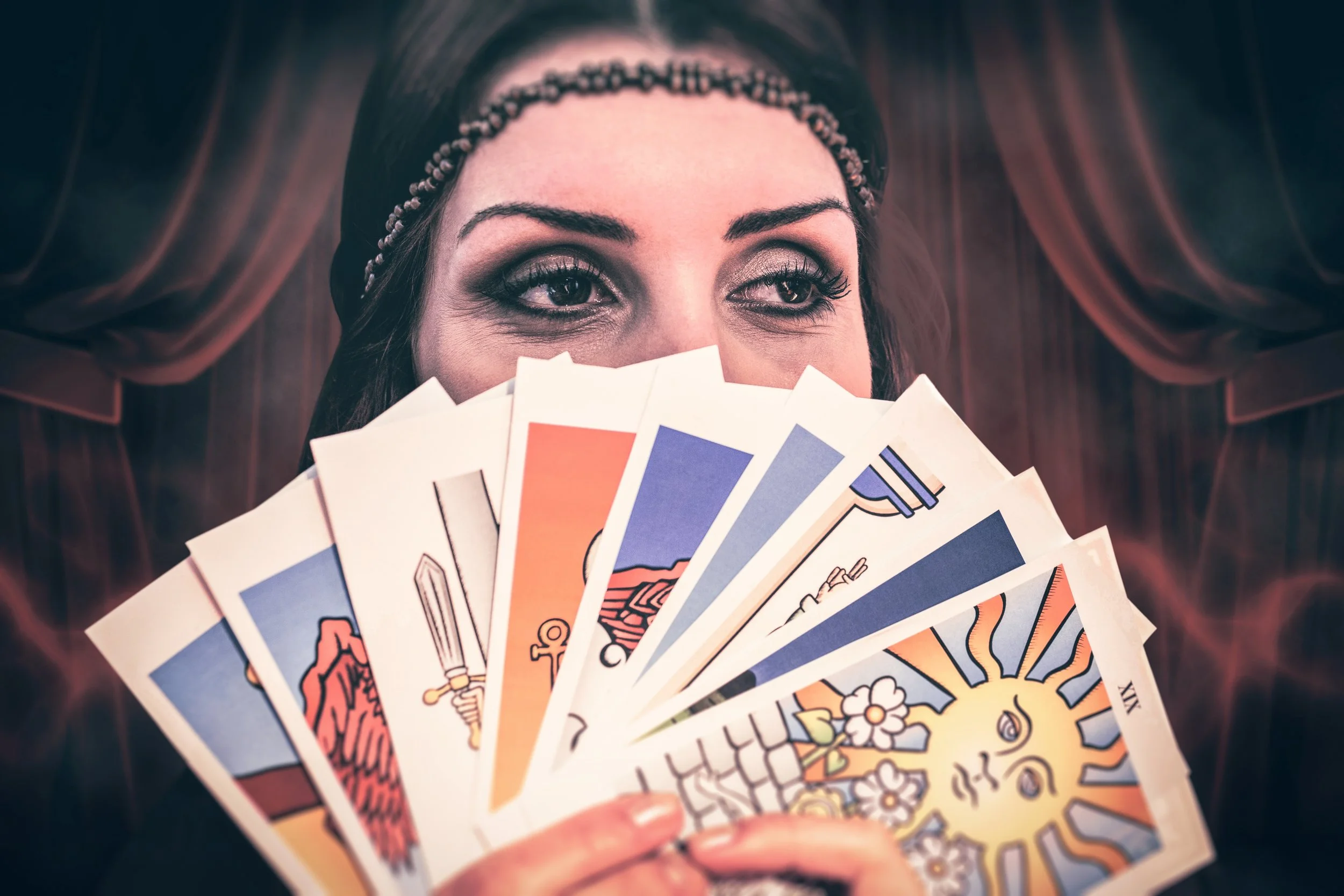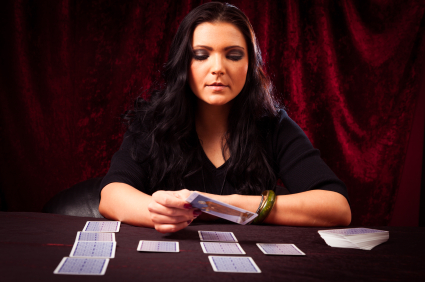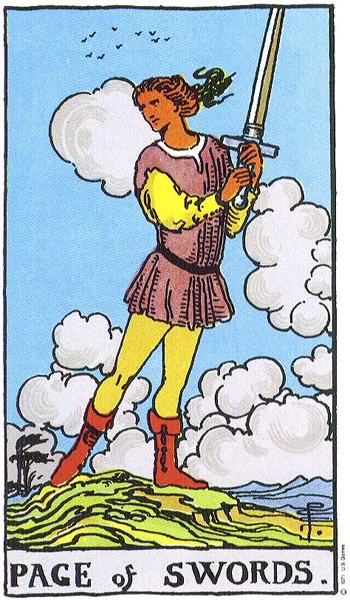
Welcome to my Community Blog for tarot enthusiasts.
Anyone with an interest in tarot, be they student, artist, collector, writer, teacher or reader, is welcome to
to include here.
Straight-Up Talk About Tarot Reversals
There's a lot of misinformation out there about tarot reversals, how they work, and why we use them. Here's what's true for me.
When a tarot card appears upside-down, many readers take the card reversal into account in their interpretations. This is commonly called “reading reversals”. It’s not necessary to read reversals to give a great tarot reading. In fact, some tarot traditions, most notably Crowley-Harris-Thoth, do not honor reversals at all.
Each tarotist, whether novice, or expert, hobbyist or professional, discovers and develops a reading style that works for them. As long as the readings are helpful and reflect truth, there is no one right way to read tarot – the technique is judged entirely by the results.
Likewise, each tarot pro has their own way of formally teaching tarot to their students, and informally teaching about tarot to their clients, and to the public at large.
However, it really gets my garters in a bunch when I hear tarot pros speaking of reversals in terms of positive and negative, or light and dark. This leads to students who tell me “I don’t want to read reversals because I don’t like negativity!”
Today I saw two such posts online – tarot pros who believe that a card reversed is automatically interpreted as “negative”. The suggestion is that a tarot reading without reversals will offer a more uplifting message.
The idea that limiting the details of a reading reduces negativity seems silly. Likewise, the idea that reversals automatically create negative information or negative energy is laughable.
In general, modern tarot thinking asks us to depart from the fortune-telling days of old when we might see a card as “good” or “bad”. While we would all rather see the Sun than the Tower, most of us realize that, in a particular reading, the Sun, a generally happy card, might indicate something undesirable, while the Tower, a generally unhappy card, might represent a positive change.
I truly believe that the more we readers cling to ideas like positive/negative and good/bad in our understanding of the cards (and in life) the less able we are to use the cards to help bring actual healing opportunities to ourselves and/or our clients. Often, what we fear or resist is the thing we need most, and what we long for doesn’t serve us. When we look at the energies present without judging them as light or dark we are better able to see all the options.
Beyond the philosophical question is the more practical question of how to read reversals. if reversals don’t automatically create a negative interpretation, what do they do, and why are they helpful?
To understand reversals, we must first understand the concept of tarot dignity, or aspect. Even in traditions where reversals are not commonly read, dignity plays an important role in tarot interpretation.
In tarot, the word “dignity” or “aspect” refers to the way context affects interpretation. If a card is well-dignified, it’s strongest and most direct interpretation would be used. If a card is ill-dignified, there may be a resistance, a delay, an avoidance or an opposition.
Dignity can be determined based on the elemental association of the cards in a spread, by the context of the question or the surrounding cards, or even by the way the reader feels about the card in the moment. However, the most common way to determine dignity is to see upright cards as generally well-dignified, and reversed cards as generally ill-dignified.
Many talented readers who don’t read reversals rightly say that their intuition, and the surrounding cards, let them know whether the card should be read directly or with some sense of force or resistance.
I agree that this technique works, but still stand in favor of reversals, for two reasons.
The first is that a reversal can offer a nice visual clue. For instance, if the Waite Three of Swords is reversed, the Swords can easily fall out the heart and offer healing. If the Hanged Man is reversed, he appears to be dancing.
So much of tarot is visual. Reversals literally offer us another perspective on the tarot images.
The second reason I advocate reversals is that reversals present an opportunity for magick. If you receive a card whose energy you don’t welcome, you can reverse it to lessen its effect in your life.
If you receive a card reversed whose energy you would like to welcome, you can turn it right side up as a way of bringing that energy more strongly into your life.
In interpreting reversals, the important thing is to release the idea that reversals are always negative. You can also release the idea that a reversal always creates an opposite of the card’s direct meaning. Sometimes that can be true, but other times not.
The thing to remember is this. A reversal shows an aspect of the energy of the card. When interpreting a reversal, consider first the direct energy of the card. Then, think about the context of the question, the surrounding cards, and how you feel about the card in the moment.
Consider what a more indirect form of the card’s energy might be. A reversal may put the card’s energy in the past, or lessen it, or make it more forceful. And yes, sometimes, it might create an opposite.
There are times when the reversal of a card is less desired than its upright presentation. Yet, that still does not create a sense of negativity, only a question of what to do to welcome that energy more fully.
And, there is the third reason I recommend working with reversals. Each reversal offers us an additional opportunity for contemplation. Is this an energy that is passing out of your life, and are you ready to see it go? Or, is this something coming in that you want to welcome more aggressively?
Reversals let us see nuances, and give us a sense of the passage of time.
Some readers seem to avoid reversals out of fear of confusion. Aren’t 78 cards enough? My answer is that reversals help us understand the full range of each card’s energy. In the end, this can actually make tarot reading less confusing.
Whether or not you want to have reversals in your tarot practice, don’t fall into the trap of thinking reversals create negativity, or give superfluous information. If you hear a tarot teacher suggesting such a thing, it might be time to find a new teacher.
An Example of Reversal: Two Angles on the Same Card
There is so much controversy and misunderstanding around reversed cards in tarot. The quandary is this. Since it is the reader’s choice whether to honor reversals, we must acknowledge that one can conduct a perfectly good reading without them. That being the case, then, why do some tarotists find reversals so integral to their reading process? One answer might be this.
There is so much controversy and misunderstanding around reversed cards in tarot. The quandary is this. Since it is the reader’s choice whether to honor reversals, we must acknowledge that one can conduct a perfectly good reading without them. That being the case, then, why do some tarotists find reversals so integral to their reading process? One answer might be this.
A reversal changes the energy of the card. While the reversal may not change the overall message, it can change the way you deliver the message. For some of us, the reversal is like a stage direction – those italicized words in a script that don’t tell you what to say, but instead tell you how to say it.
Here’s an example. Let’s look at the Hierophant, both upright and reversed. One possible interpretation that often comes up for me when I see this card in a particular context is “self-employment”. When I see the Hierophant in an upright position, I might think, “This person likes to be the boss, and so they probably have their own business”. When I see the Hierophant reversed in the same context, I might think, “This person does not like having to answer to a boss, so they probably have their own business”.
The common factor with this card in this context, whether upright or reversed, is self-employment. The nuance that the reversal adds is the personality difference between liking to be the boss and preferring not to have a boss. If the reader can determine these sorts of subtleties, the reading will certainly have more resonance and detail.
At the same time, we can understand that, without that small distinction, the accuracy of the reading remains intact.
Interpreting reversals is not the only way to determine the dignity of a card. We can consider cards well dignified or ill dignified based on surrounding cards and elemental factors as well. My concern is not necessarily to be an advocate for reversals. My concern is that so many people seem to eschew reversals simply because they misunderstand them. If we can think of a reversal, or any ill dignity, simply as an energy shift, we open ourselves to a new world of possibilities in divination.
Five Ways to Interpret a Reversed Tarot Card
In tarot, a card is considered “reversed” if it appears in a tarot spread upside down. Not ever tarot deck, tarot tradition or tarot reader honors reversals.
For me, reversals add a great deal more nuance and texture to a reading. I encourage my students to pay attention to reversals and consider them in their interpretations.
Some readers choose not to honor reversals because the practice just doesn’t resonate for them. That’s fine. Part of becoming a great tarot reader is to figure out what really works and doesn’t work for you.
I suspect that a lot of tarot students would prefer to take advantage of the extra information reversals can give them, but have a hard time with the actual interpretations.
Some readers, and teachers, have a hard-and-fast approach to reversals, claiming that reversals will always denote a specific thing. In my experience this has not been true.
Some readers and teachers believe that reversals are always negative, or always an opposite, of the card’s original energy. For me, there is no “always” when it comes to reversals.
I find that reversals are most helpful when we give them some wiggle remove. Rather than saying that a reversal will always be a particular thing, it is better to say that a reversal changes the energy of the card in some way.
Here are five ways a reversal can affect the interpretation of a card.
-
Too Much
A reversal can indicate an over-abundance of the card’s energy. For instance, the Queen of Cups reversed may be over-emotional or depressed. The Three of Cups reversed could indicate too much partying.
-
Too Little
Sometimes a reversal can indicate a lack of the card’s energy. For instance, the Four of Swords reversed could indicate a busy period, and the need for rest and retreat.
-
Opposite
Yes, sometimes a reversal can be an opposite. The Hermit reversed could indicate social activity, for instance.
-
Avoidance
Sometimes the reversal indicates a tendency to avoid the energy of the card. For instance, the Five of Wands reversed might indicate a person who tries to avoid conflict.
-
Relief/Release
Sometimes a reversal (especially of a difficult card) can put the energy of the card in the past. This may indicate a recovery or release from the energy of the card. For example, the Devil reversed might come up for a person who has quit smoking.
The next time you see a reversed card in your tarot spread, consider which of these possibilities might bring more clarity to your reading.
Answers to Your Questions about Tarot: Court Cards and Reversals
Our question comes from Ben.
Hi Christiana,
I've just discovered your YouTube channel and I'm finding the answers to questions videos really helpful so thank you!
I am VERY new to tarot, I purchased by Rider-Waite deck 6 months ago and am loving it.
I was wondering whether you could do a video about whether you take into account reversed cards in readings. I know some people don't. From the off I've read cards reversed if they come up but I do have to say it is incredibly challenging sometimes to decifer what the cards mean (especially court cards)! From reading books and seeing what other people say online it's clear that everyone has their own opinion.
What do you think? Do you take into account reversed cards? And if so do you have any tips on how to decipher the meaning? I particularly find the Page of Swords a little elusive...
Hope you are well and thank you so much again for your videos!
Thanks for a great question, Ben. I hope you enjoy the video!
Not everyone honors reversals, but everyone honors dignities.
I do encourage my students who use a deck in the RWS (Rider-Waite- Smith) tradition to consider working with reversals. I think reversals give us more detail, more nuance and more ability to give a really specific reading.
I almost always honor reversals in my personal and professonal readings.
Each card has a spectrum, or continuum of possible energies and meanings. The reversal can give a clear sense of where on the continuum the card best fits the situation.
A reversal changes the energy of the card; perhaps introducing a resistance, a delay or an opposite.
My system for dealing with reversed Court Cards, when I think they represent people, is simple.
Upright Court Cards’ personalities are determined by their element and rank. All upright Court Cards are well-intentioned and basically good people.
Reversed Court Cards are people with problems. They may not be well-intentioned, or may be dealing with issues.
Please watch the video, which includes my take on the Page of Swords, both upright and reversed.
If you have a question about tarot, please email me.
Answers to you Questions about Tarot: Reversals and Court Cards
Video of Answers to you Questions about Tarot: Reversals and Court Cards
Answers to your Questions about Tarot: Tarot Reversals
Linda had a question about tarot reversals. She performed a reading where every card in the spread was reversed. She wondered how I would handle that.
First, let me say something about reversals. While there is no tradition that requires the honoring of reversals I do encourage my students to honor reversals, and I always honor reversals.
I feel honoring reversals gives the reading more nuance and more information.
Some people erroneously feel that reversals are always negative, or are always interpreted as the opposite of the upright card. The truth as I see it is that reversals change the energy of the card.
The reversal may indicate an opposite, a delay, a lessening of the card’s energy or an increase in the card’s energy. The reversal may indicate the client is resistant to the card’s energy.
When I see a spread with a majority of reversals, or all cards reversed, I will interpret each card according to its orientation, so I will definitely read the reversals.
I will also interpret the trend of reversals. A trend of reversals in a spread may indicate that the client is feeling upside down, or the client doesn’t know what to do, or the client is contemplating a course of action that may not be beneficial.
Thanks for a great question, Linda.
If you have a question about tarot, please email me.
Enjoy the video.
Christiana Answers a Question about Tarot Reversals
Video of Christiana Answers a Question about Tarot Reversals









